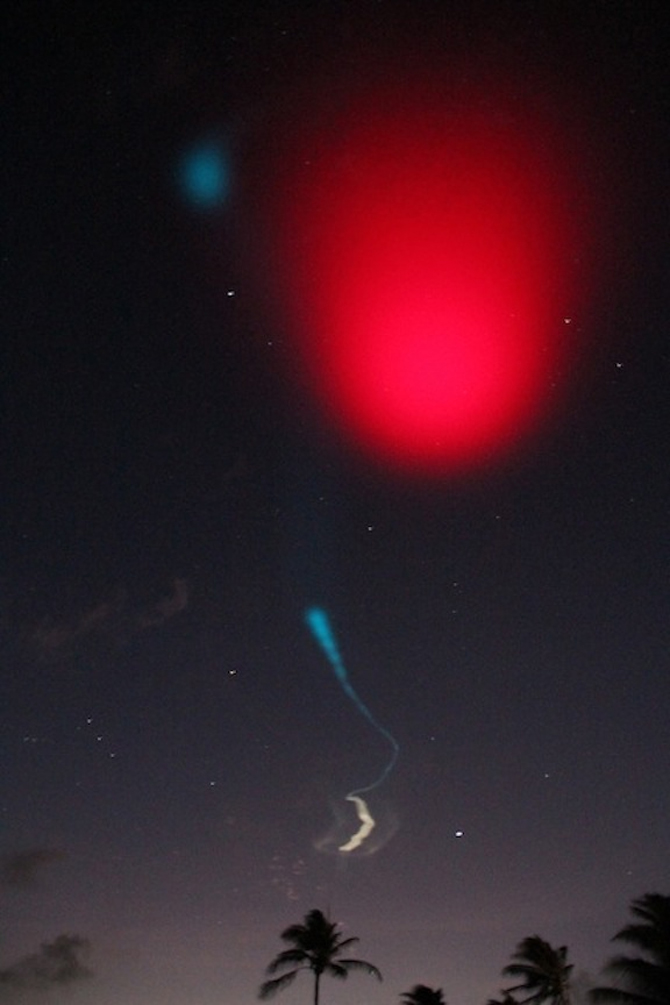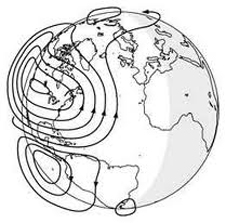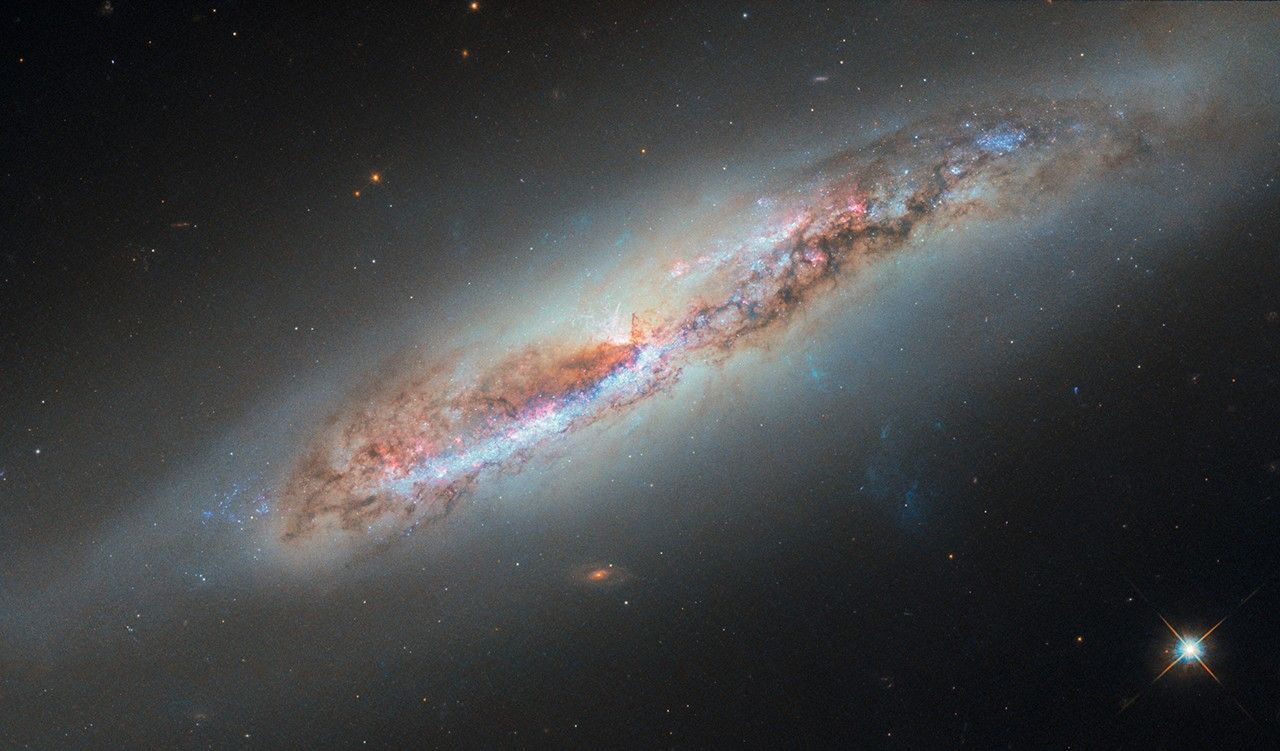Update – July 3, 2013 – Daytime Dynamo Mission Scrubbed July 3; Next Attempt July 4
The launch of two sounding rockets from the Wallops Flight Facility was scrubbed on Wednesday, July 3 due to poor weather in the area. The next attempt for these two rockets will be Thursday, July 4, with a window of 9:30-11:30 a.m.
The two rockets, a Black Brant V and a Terrier-Improved Orion, will launch 15-seconds apart in support of the Daytime Dynamo experiment, which is a joint project between NASA and the Japan Aerospace Exploration Agency, or JAXA.
The project is designed to study a global electrical current called the dynamo, which sweeps through the ionosphere. The ionosphere stretches from about 30 to 600 miles above Earth and plays a crucial role in our day-to-day lives. For example, radio waves bounce off it as they travel from sender to receiver, and communications signals from satellites travel through it as well. A disruption in the ionosphere can disrupt these signals.
The first rocket scheduled for launch is a single-stage Black Brant V, which will collect data on the neutral and charged particles it travels through. The second rocket is a two-stage Terrier-Improved Orion. It will shoot out a long trail of lithium gas to track how the upper atmospheric wind varies with altitude. These winds are believed to be the drivers of the dynamo currents.
Since the launch is during the day, the lithium trails will not be highly visible to the naked eye.
The rockets will be visible to residents in the Wallops region. The NASA Visitor Center will open at 8 a.m. on launch day for viewing the launches. The Wallops USTREAM channel will broadcast the launch live beginning at 8:30 a.m. on launch day.
Update – July 1, 2013: Launches Scrubbed July 1; Next Attempt No Earlier Than July 2
The launch this morning of the two rockets for the Daytime Dynamo experiment has been scrubbed because of weather. The next possible attempt would be Tuesday, July 2. A decision on whether to attempt a July 2 launch will be made after this afternoon’s weather briefing.
Update – June 28, 2013
The launch of the two sounding rockets supporting the Daytime Dynamo experiment from the Wallops Flight Facility has been postponed to no earlier than Sunday, June 30. The postponement is because of unacceptable weather forecasted for Saturday, June 29. A decision on whether to launch on June 30 will be made tomorrow evening. The launch window remains 9:30 – 11:30 a.m.
Update – June 25, 2013
The launch of two sounding rockets from the Wallops Flight Facility was scrubbed on Tuesday, June 25, due to activity in the ionosphere not developing as needed. As the launch window neared, there were also boats that would impact the hazard area. The next attempt for these two rockets will be Friday, June 28, with a window of 9:30-11:30 a.m.
The two rockets, a Black Brant V and a Terrier-Improved Orion, will launch 15-seconds apart in support of the Daytime Dynamo experiment, which is a joint project between NASA and the Japan Aerospace Exploration Agency, or JAXA.
Update – June 24, 2013
The launch of two sounding rockets from the Wallops Flight Facility was scrubbed on Monday, June 24 due to high cirrus clouds. The next attempt for these two rockets is currently scheduled for Tuesday, June 25, with a window of 9:30-11:30 a.m. The two rockets, a Black Brant V and a Terrier-Improved Orion, will launch 15-seconds apart in support of the Daytime Dynamo experiment, which is a joint project between NASA and the Japan Aerospace Exploration Agency, or JAXA.
The project is designed to study a global electrical current called the dynamo, which sweeps through the ionosphere. The ionosphere stretches from about 30 to 600 miles above Earth and plays a crucial role in our day-to-day lives. For example, radio waves bounce off it as they travel from sender to receiver, and communications signals from satellites travel through it as well. A disruption in the ionosphere can disrupt these signals.
The first rocket scheduled for launch is a single-stage Black Brant V, which will collect data on the neutral and charged particles it travels through. The second rocket is a two-stage Terrier-Improved Orion. It will shoot out a long trail of lithium gas to track how the upper atmospheric wind varies with altitude. These winds are believed to be the drivers of the dynamo currents. Clear skies are required to view these trails using ground-based cameras.
The rockets will be visible to residents in the Wallops region. The NASA Visitor Center will open at 8 a.m. on launch day for viewing the launches. The Wallops USTREAM channel will broadcast the launch live beginning at 8:30 a.m. on launch day.
06.19.13 – Sounding Rocket To Observe Currents In Atmosphere

Swirling through Earth’s upper atmosphere is a layer of charged particles called the ionosphere. Constantly on the move, currents through the ionosphere can be much more complicated than winds at lower altitudes, because the currents vary in concert with magnetic fields around Earth and solar activity. The ionosphere stretches from about 30 to 600 miles above Earth, and it plays a crucial role in our day-to-day lives because radio waves bounce off it as they travel from sender to receiver. Communications and navigation signals from satellites travel through it as well. A disrupted ionosphere equates to disrupted signals.
Scientists are gearing up to launch a sounding rocket from NASA’s Wallops Flight Facility, Wallops Island, Va. for a five-minute trip to study a global, electrical current called the dynamo sweeping through the ionosphere. The sounding rocket is also called Dynamo. The window for launch is June 24 to July 8, 2013 (excepting June 26 and 27).
“The dynamo further south at the magnetic equator is particularly strong and is called the equatorial electrojet,” said Robert Pfaff, the principle investigator for the Dynamo sounding rocket at NASA’s Goddard Space Flight Center in Greenbelt, Md. “The mid-latitude dynamo is less understood and is actually more complex, since here Earth’s magnetic field is at an angle.”
The Dynamo mission, a joint project between NASA and the Japan Aerospace Exploration Agency, or JAXA, consists of two rockets that will launch 15 seconds apart during a window that lasts between 9:30 a.m. and 11:30 p.m. EDT. Each sounding rocket will go for a five-minute flight to some 100 miles up in the ionosphere. The larger rocket is a Black Brant V, which is 35 feet long, carrying a payload of 600 pounds. This rocket will collect information about the neutral and charged particles through which it travels. The second rocket is a Terrier-Improved Orion, and is 33 feet long. It will shoot out a long trail of lithium gas to track how the upper atmospheric wind varies with altitude. These winds are believed to be the drivers of the dynamo currents.
 An electric current called the dynamo, illustrated here, sweeps through Earth’s upper atmosphere. A sounding rocket called Dynamo will launch in the summer of 2013 to study the current, which can disrupt Earth’s communication and navigation signals. Credit: USGS
An electric current called the dynamo, illustrated here, sweeps through Earth’s upper atmosphere. A sounding rocket called Dynamo will launch in the summer of 2013 to study the current, which can disrupt Earth’s communication and navigation signals. Credit: USGS
Studying the winds during the daytime is not easy because the wind tracer normally used by sounding rockets is only visible at night. As a result, scientists at JAXA and Clemson University in Clemson, S.C., have jointly developed technology that uses lithium trails as a tracer, which is visible during the day using cameras with special filters. The Dynamo experiment will use a NASA airplane to gather data above the haze and clouds in order to record how the lithium, and hence the wind, moves.
Understanding what influences the movement of both the neutral and charged particles in the upper atmosphere is crucial to understanding the dynamo, as both affect the currents.
“The simple picture of the dynamo involves two giant circles of current – one in the northern hemisphere and one in the south,” said Doug Rowland, a co-investigator for Dynamo at Goddard. “At its most basic, the electric current is caused simply because the sun heats the upper atmosphere during the day causing the gas to rise up, which in turn causes movement, a wind. The neutral wind pushes the heavier charged particles and that drives an electric current. So both the neutral and the charged material must be understood.”
Such a simple picture is not a complete picture, of course, and sounding rockets such as Dynamo are needed to not only reveal how these fundamental currents are set up, but also how a host of other occurrences around Earth impact the dynamo. For example, activity on the sun can affect Earth’s magnetic fields sometimes causing severe variation in the ionosphere. Additionally, the lower parts of the ionosphere contain different types of ions, which collide with the neutral gases in different ways, depending on their size.
Some of these effects have been studied before in the mid-latitudes, but in this region no one has studied the electromagnetic effects at the same time as they’ve studied the neutral winds.
Not only will understanding the dynamics of the ionosphere currents help to understand how – and perhaps even predict when – the ionosphere can disturb radio signals, it can shed light on similar processes believe to occur on other planets throughout the solar system.
“The manner in which neutral and ionized gases interact is a fundamental part of nature,” said Pfaff. “There could very well be a dynamo on other planets. Jupiter, Saturn, Uranus and Neptune are all huge planets with huge atmospheres and huge magnetic fields. They could be setting up dynamo currents galore.”
While sounding rockets make short trips, they provide access to critical areas of the upper atmosphere that are too low for orbiting satellites. Wallops Flight Facility, which manages NASA’s sounding rocket program, is where the payloads are designed, built and tested.
To find out more about NASA’s sounding rocket missions, visit: https://www.nasa.gov/soundingrockets/
Karen C. Fox
NASA’s Goddard Space Flight Center, Greenbelt, Md.





























